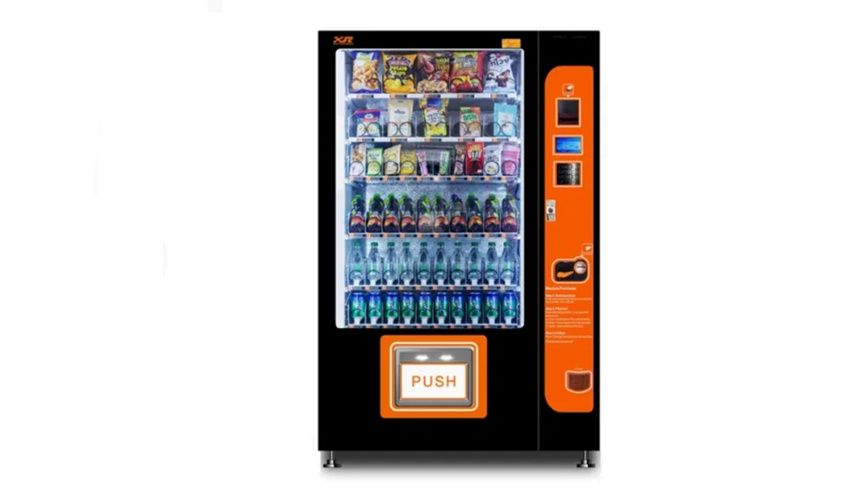Vending machines are automated retail systems designed to provide goods or services without the need for direct human interaction. They have existed for decades, originally dispensing simple items such as snacks, drinks, or newspapers. Over time, vending machines have expanded to include hot meals, electronics, personal care items, and even innovative services like contactless payment and healthy food options.
The primary purpose of vending machines is convenience—offering consumers access to products at any time of the day, often in places where traditional retail might not be practical. Their presence in schools, workplaces, transportation hubs, and public spaces highlights their role in modern consumer behavior.

Importance – Why vending machines matter today
Vending machines are more than just snack dispensers; they play a key role in addressing several modern needs:
-
Convenience for consumers: Available 24/7 without the need for staff.
-
Business opportunities: Entrepreneurs can operate vending businesses with relatively low overhead compared to physical stores.
-
Public accessibility: Vending machines provide quick access to food, beverages, and essentials in transit stations, hospitals, and offices.
-
Adaptation to lifestyle changes: Many machines now focus on healthier snacks, sustainability, and digital payment options, responding to changing consumer expectations.
This importance is amplified in fast-paced urban environments, where people seek quick, affordable, and accessible solutions.
Recent Updates – Trends and innovations in vending (2024–2025)
The vending machine industry has evolved rapidly in recent years. Some of the notable updates include:
-
Contactless payments (2024): Most modern machines now support mobile wallets such as Apple Pay, Google Pay, and QR-based payment methods.
-
Health-focused vending: Growing demand for nutritious options like salads, protein bars, and sugar-free beverages.
-
Smart vending machines: Equipped with artificial intelligence to recommend products and monitor stock automatically.
-
Sustainability efforts: Machines now incorporate energy-efficient cooling systems and recyclable packaging.
-
Expansion beyond food: Some regions have introduced vending machines that sell electronics, books, or personal protective equipment.
A report from late 2024 indicated that smart vending machines are expected to grow significantly, particularly in Asia and North America, as part of the broader retail automation trend.
Laws or Policies – Regulations affecting vending machines
Vending machines are subject to various regulations depending on the country and region. Some common policies include:
-
Food safety standards: Items such as perishable foods must be stored at regulated temperatures.
-
Labeling requirements: Many governments require clear labeling of calories and nutritional information.
-
Licensing and permits: Operators often need permits to place machines in public or private locations.
-
Consumer protection laws: Machines must ensure accurate pricing and refund mechanisms if items are not dispensed.
-
Environmental regulations: Rules on packaging waste, recycling, and energy efficiency affect machine operations.
For example, in the United States, vending machines in schools are regulated to provide healthier choices under nutrition policies, while in the European Union, energy efficiency directives guide the design of new machines.
Tools and Resources – Helpful platforms and apps
Several tools and resources are available for both vending machine operators and consumers:
-
Management software: Cloud-based platforms allow operators to track sales, inventory, and machine performance in real-time.
-
Mobile apps: Apps such as PayRange and Nayax simplify cashless transactions for consumers.
-
Location analysis tools: Services that help businesses identify profitable vending machine placements.
-
Cost calculators: Online calculators to estimate startup costs, profit margins, and operating expenses.
-
Industry associations: Organizations like the National Automatic Merchandising Association (NAMA) provide resources, training, and policy updates.
| Tool/Resource | Purpose | Example Use Case |
|---|---|---|
| Inventory management | Track sales & refill needs | Operators see real-time stock levels |
| Payment apps | Enable cashless transactions | Consumers pay via phone |
| Profit calculators | Estimate revenue & costs | Entrepreneurs planning investment |
| Association websites | Industry guidance & compliance info | Access regulatory updates |
FAQs – Common questions about vending machines
Q1: Are vending machines still profitable in 2025?
Yes, vending machines remain profitable, especially when placed in high-traffic areas and stocked with items that meet consumer demand, such as healthier snacks or beverages.
Q2: How much does it cost to start a vending machine business?
Startup costs vary widely. A new machine can cost between $2,000 and $10,000 depending on features, while refurbished machines are more affordable. Location fees and restocking costs should also be considered.
Q3: Do vending machines accept only cash?
No. Modern machines increasingly support card payments, mobile wallets, and contactless transactions, making them more convenient for today’s cashless society.
Q4: What are the challenges of running vending machines?
Common challenges include theft or vandalism, machine maintenance, fluctuating consumer demand, and compliance with local regulations.
Q5: Can vending machines sell fresh food safely?
Yes, provided they are equipped with refrigeration systems that meet food safety regulations. Many operators now use smart sensors to ensure temperature control and compliance.
Conclusion
Vending machines have grown far beyond their traditional role of dispensing snacks and drinks. Today, they represent a crucial part of retail automation, combining convenience, technology, and adaptability to modern consumer needs. With the introduction of smart features, healthier product offerings, and sustainable designs, vending machines continue to shape how people access everyday essentials.
For businesses, they provide scalable opportunities with relatively low overhead, while for consumers, they offer unmatched accessibility. As regulations, technology, and consumer habits evolve, vending machines are set to remain a fixture in public and private spaces worldwide.